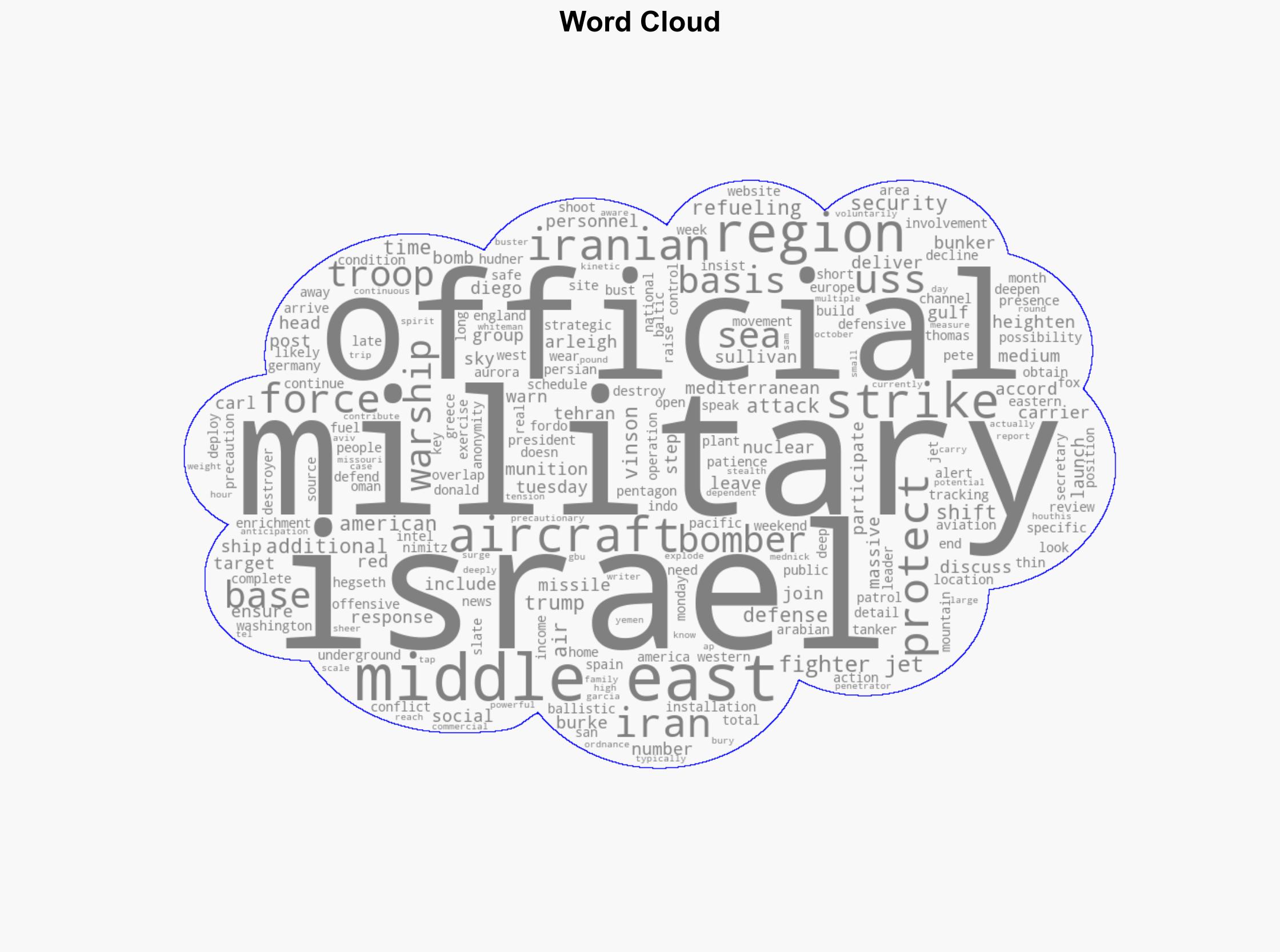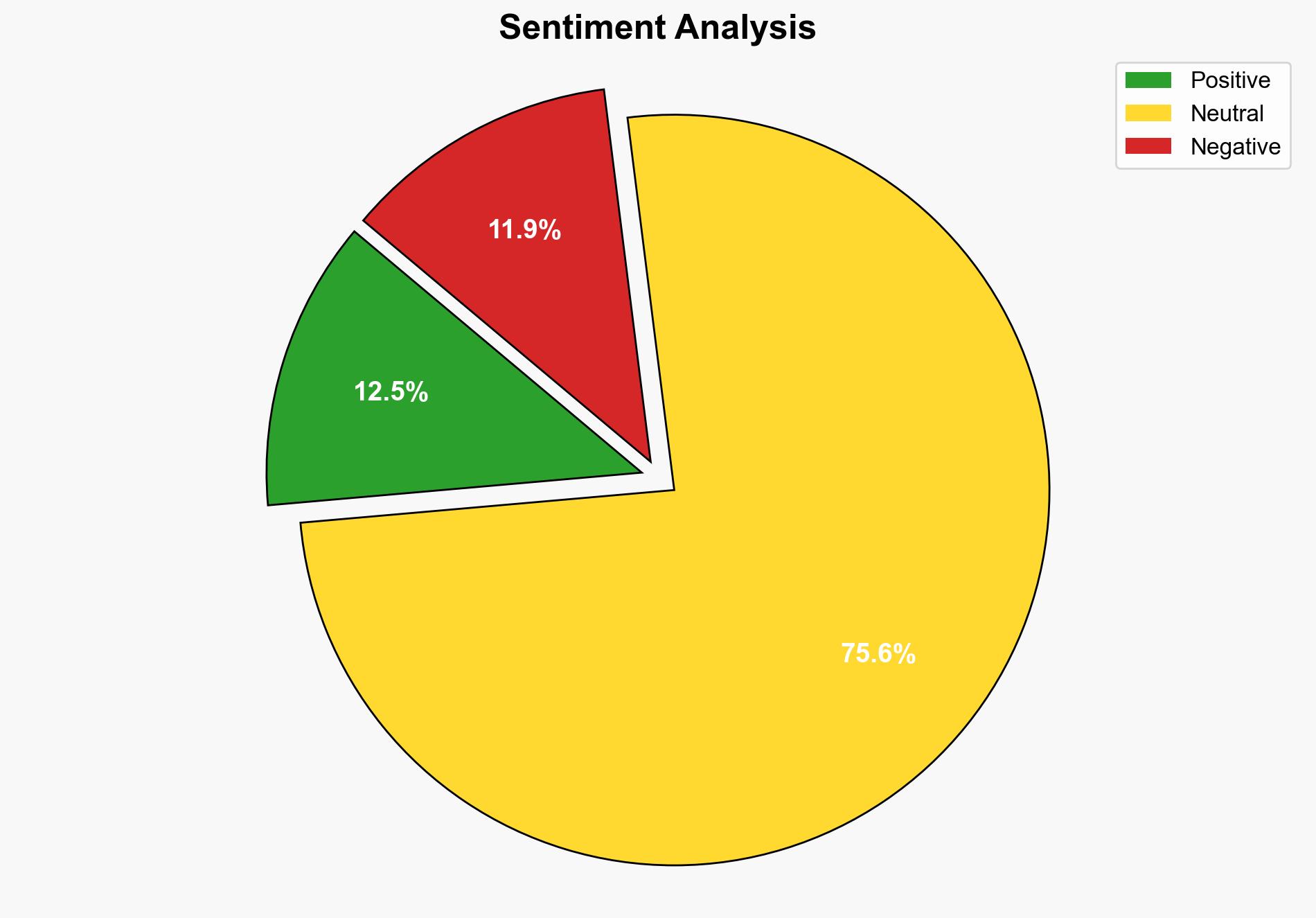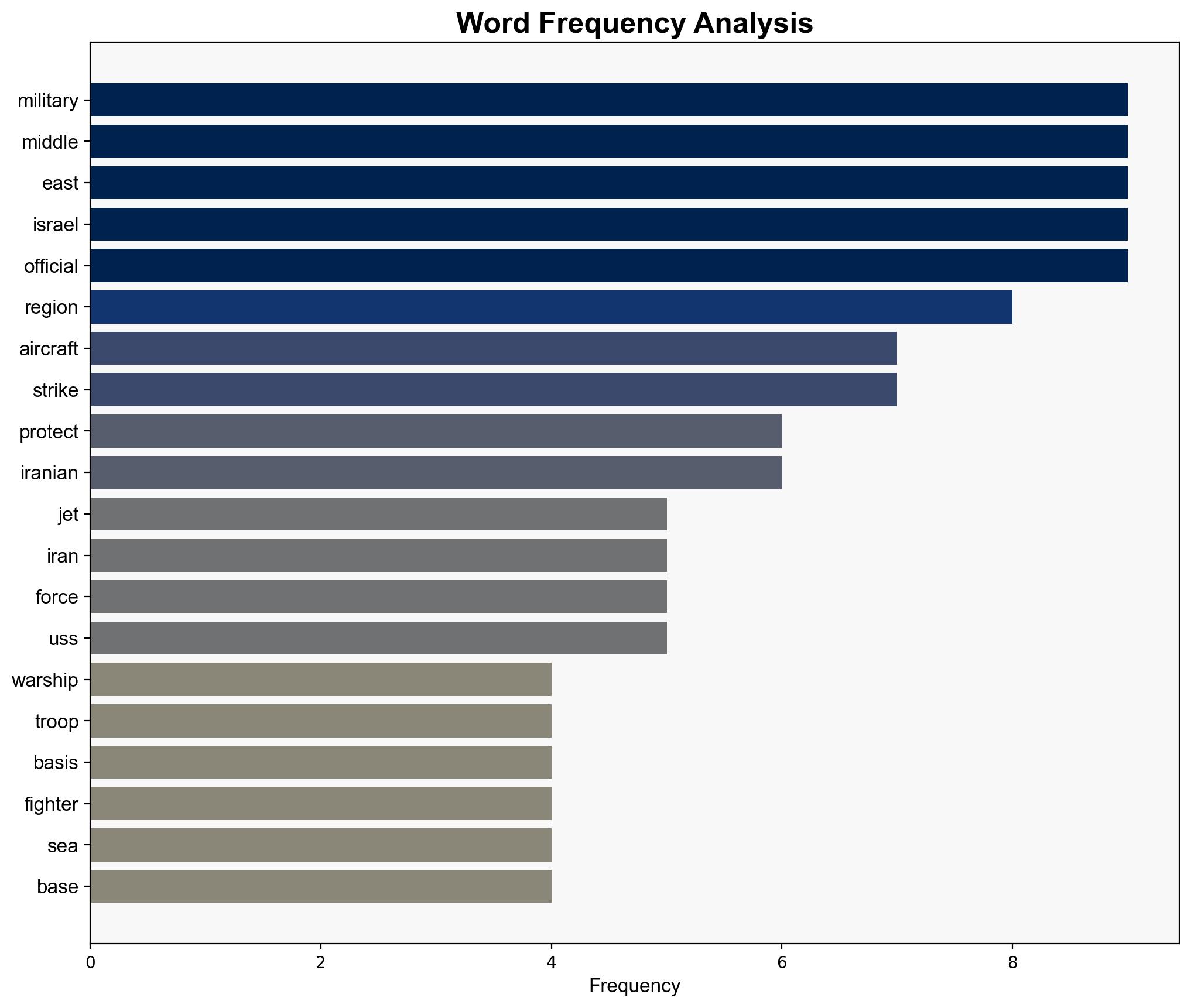How the US has shifted military jets and ships in the Middle East – ABC News
Published on: 2025-06-18
Intelligence Report: How the US has shifted military jets and ships in the Middle East – ABC News
1. BLUF (Bottom Line Up Front)
The United States has strategically repositioned military jets and ships in the Middle East to protect Israel from potential Iranian attacks. This move follows heightened tensions and signals a readiness to counteract threats, emphasizing a defensive posture while maintaining regional stability. Key recommendations include enhancing intelligence-sharing with allies and increasing diplomatic engagements to de-escalate tensions.
2. Detailed Analysis
The following structured analytic techniques have been applied to ensure methodological consistency:
Causal Layered Analysis (CLA)
Surface events include the deployment of additional fighter jets and warships. Systemic structures involve military alliances and regional power balances. The worldview reflects a commitment to protecting allies, while underlying myths pertain to deterrence and military superiority.
Cross-Impact Simulation
The repositioning may influence neighboring states’ military strategies, potentially escalating regional arms races or prompting diplomatic negotiations. Economic dependencies on oil routes could also be affected by increased military presence.
Scenario Generation
Scenarios include a diplomatic resolution leading to de-escalation, a prolonged standoff with increased military readiness, or an escalation into open conflict affecting global markets and security.
3. Implications and Strategic Risks
The shift in military assets highlights vulnerabilities in regional stability and the potential for cyber threats targeting military infrastructure. The risk of miscalculation or accidental engagements could lead to broader conflicts, impacting global supply chains and economic stability.
4. Recommendations and Outlook
- Enhance intelligence-sharing frameworks with regional allies to improve threat detection and response times.
- Engage in diplomatic dialogues with key regional players to reduce tensions and prevent escalation.
- Scenario-based projections:
- Best case: De-escalation through diplomatic channels, leading to regional stability.
- Worst case: Escalation into conflict, disrupting global oil supplies and increasing military engagements.
- Most likely: Continued military readiness with periodic diplomatic interventions to manage tensions.
5. Key Individuals and Entities
Donald Trump, Pete Hegseth
6. Thematic Tags
national security threats, cybersecurity, counter-terrorism, regional focus





